Fantasy Science Pt. 3: Multiple Universes In (Science) Fiction
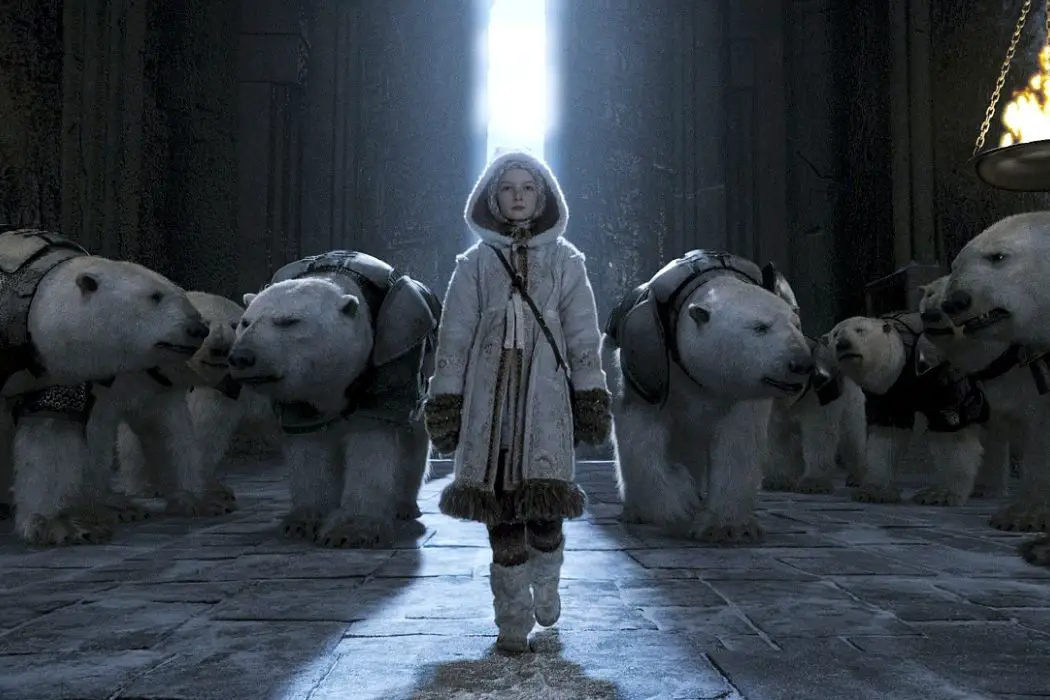
Radha has a PhD in theoretical quantum physics. Apart from…
Superposition. Quantum physics. Parallel universes. Have you heard terms like these flying around the science fiction sections of the film world? Have you ever wondered just how accurately these films portray real science? Well, my friends, today is your lucky day: this column, Fantasy Science & Coffee, aims to bridge the gap between science and science fiction in films and occasionally popular culture. My hope is to explain things in a fun way – like we’re chatting over coffee.
You may be thinking: who is this person, why does she think she can explain science, and why the heck would I want to have coffee with her? Well, I’m Radha, a researcher in India, currently pursuing a PhD in theoretical quantum physics. I quite like hot beverages. I’ll also pay.
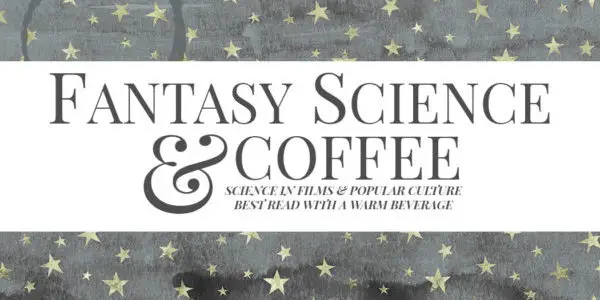
In this third part of the series, we’re going to get into how multiple universes may be possible. I’ll then attempt to categorize some of the ones represented in popular culture pieces, starting off with the film The Golden Compass (2007).
Let’s begin.
Multiple & Parallel Universes
Many science fiction and fantasy stories involve multiple universes. The portrayal of these universes varies from story to story. Some involve parallel universes that are completely different from our own, alternate dimensions with different types of beings, while others seem to appear very similar to ours. The question is, are multiple universes simply interesting constructs for storytellers, or could they fall under the purview of real science?
It turns out that the notion of many universes is not just an interesting storytelling tool; there are actually quite a few postulates about multiverses in the science community that have been formulated as interpretations of quantum mechanics and explanations of experimental observations.
The most popular choice among sci-fi/fantasy themed stories appears to be Everett’s Many-Worlds Hypothesis. This is the hypothesis in which an infinite number of worlds exist, many of them simply slight deviations from ours. That is, in another universe you and I exist, but there’s a slight change: you’re the author of this article, and I’m reading it.
This is the hypothesis I will mostly be focusing on but it will be appropriate to identify some other classifications for you to appreciate the differences. Here, I list the four levels of classification by cosmologist Max Tegmark:
- Level 1 – Regions beyond our cosmic horizon – The assumption is that space is infinite, and that matter is distributed all throughout it. Since the matter is finite (albeit enormous) there are only so many configurations it can take. Therefore, eventually, the configuration we see in our universe will be repeated. In other words: anything that can happen will happen. This accounts for all possible cosmic histories, so the similar universes are very far apart.
- Level 2 – Other post-inflation bubbles – Our universe is in a bubble undergoing expansion, and other such bubble universes have sprung up with their owns laws of physics.
- Level 3 – The many worlds of quantum physics – This is where Everett’s Many-Worlds hypothesis fits in, as an interpretation of quantum mechanics. I’ve devoted a tiny section to it below.
- Level 4 – Other mathematical structures – This essentially answers the Wheeler-Hawking question: “Why these equations, why not others?”. Parallel universes that fall under this classification are governed by equations different from the ones that govern our own. Basically, if a mathematical structure exists, then it should manifest in a physical form somewhere.
There’s evidence supporting each of these classifications, and thus far there’s been no way to test them out. For an in-depth look at each of them check out Tegmark’s paper linked in the Read More section.
There are other classifications by physicist Brian Greene, explanations of which were, in my opinion, very succinctly compiled in About.Com. I’ve added them as an Appendix.
Everett’s Many-World Hypothesis
In the examples to come, I repeatedly stress on one point that I believe indicates they fall under the Level 3 classification: we see nearly identical parallel worlds to the ‘home’ world in the story. They seem to differ only by slight deviations. Everett’s idea is based on just that: these slight deviations. Where do these deviations come from? From decisions, or, “measurement outcomes”.
Essentially, every decision you make triggers a new branch in which you selected an alternate choice for that same decision. In other words, when an event has multiple possible outcomes, all the outcomes take place, but in different branches.
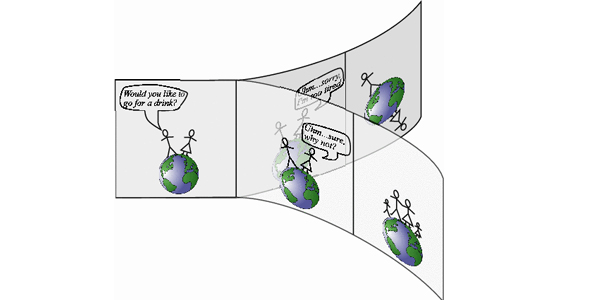
It’s actually fairly overwhelming if you think about it. Every possible outcome leads to new branches, and outcomes in those respective branches lead to further branching, until we have an infinite number of universes. While a large number of them would be similar to our world, there will eventually be universes that are radically different from ours. An analogy would be Charles Darwin’s Tree of Life. We might have all come from the same ancestors, but eventually branching over many generations lead to drastically different species.

Let’s look at it in an extremely simplified manner. When you toss a coin, you can either get heads or tails. Suppose you get tails on the first toss. A new branch will emerge that shares your history, the only difference is in that branch, you’ve tossed heads. Theoretically, there will exist a universe in which all of your tosses are only heads. Note: This is actually the pretext of ‘quantum suicide’ a thought experiment by Hans Moravec to essentially test Everett’s hypothesis. Given many consecutive games of Russian roulette directed towards you, there will be a universe in which you survive each shot. Details can be found in the Read More.
As an interpretation of quantum physics
Everett formulated this theory to explain “collapsing of the wave function”, a statement you might have heard before. Details of this will be addressed in a different article, but essentially it works on a phenomenon that exists only in quantum physics and not classical physics: superposition of states.
That is, something can be in multiple states at once, before measurement. Once you observe it, or measure it, it ‘collapses’, to one of the states, essentially wiping out the other states. Everett proposed that this collapse doesn’t really happen, and those other states don’t really vanish; they are the selected states in branched off universes. They’re realised as the measurement outcomes in their own respective universes.
Note: If you’re still not sure about quantum superposition, no worries, I’ll address it in the form of Schrodinger’s cat at a later date.
Examples of multiple universes can be found in the popular television series Doctor Who and Rick & Morty, and fantasy book series The Wheel of Time and His Dark Materials. The rules governing movement between worlds and what you’ll find if you do travel to a parallel world differ, but I believe they can all at the very least be classified as Level 3 multiple universes. See if you agree with my reasoning!
Example 1: The Golden Compass
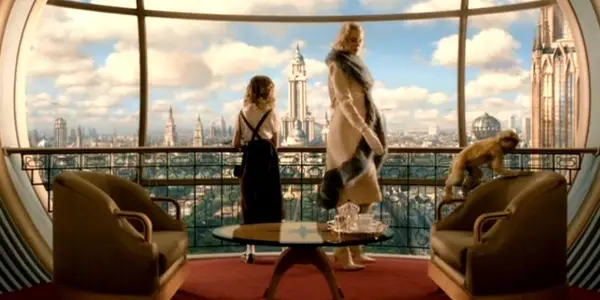
The Golden Compass, based on the fantasy book trilogy His Dark Materials by Philip Pullman revolves around the multiverse; the whole premise of the story is to unite and heal parallel universes. The two main characters, Will and Lyra, who become best friends, are from two parallel worlds with slight differences. Will appears to be from modern day England on our own Earth. Lyra belongs to Jordan College in Oxford, England in an alternate world with these stark differences from our own:
- Humans are accompanied by dæmons, the animal embodiments of their souls.
- Technology has evolved in a different way, and the primary mode of transport is by zeppelin. Automobiles and airplanes have not been invented.
- Because of the vintage type of clothing and lifestyle, they appear to be behind our world in some ways, but in a few fields like that of particle physics (in their world called “experimental theology”) they match or surpass our world.
The book trilogy is rife with references to and explanations behind the parallel worlds. Here’s a line by the witch Serafina Pekkala:
Serafina: There are many universes and many Earths parallel to each other. Worlds like yours, where people’s souls live inside their bodies, and worlds like mine, where they walk beside us, as animal spirits we call dæmons.
And another by Lord Asriel:
Now that world, and every other universe, came about as a result of a possibility. Take the example of tossing a coin: it can come down heads or tails, and we don’t know before it lands which way it’s going to fall. If it comes down heads, that means that the possibility of its coming down tails has collapsed. Until that moment the two possibilities were equal. But on another world, it does come down tails. And when that happens, the two worlds split apart […] In fact, these possibility collapses happen at the level of elementary particles, but they happen in just the same way: one moment several things are possible, the next moment only one happens, and the rest don’t exist. Except that other worlds have sprung into being on which they did happen.
This quote quite literally explains Everett’s Many-World Hypothesis, and it’s clear that Philip Pullman drew inspiration from it for this epic story.
Verdict: Level 3
Example 2: Doctor Who
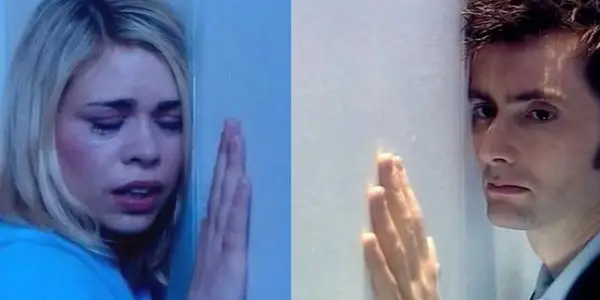
In the second series of the new Doctor Who, the 10th Doctor and his companion, Rose, find themselves on a parallel Earth much like our own, with a few differences. On her home Earth, Rose’s father is dead. However, on the parallel Earth, he’s alive. Moreover, on the parallel Earth, she does not exist as his daughter; he and his wife (who is Rose’s mother on her home Earth) have a dog named Rose. Since we’re dealing with slight deviations from the original world, and the laws of physics are still the same in both worlds, Doctor Who appears to deal primarily with Level 3 multiple universes.
There is also slight evidence of a Level 2 influence on these multiple universes as well. A devout Whovian may have already thought of the episode The Doctor’s Wife as a possible indicator of a Level 2 classification, since they end up in what seemed to be a pocket universe:
The Doctor: Imagine a great big soap bubble with one of those tiny bubbles on the outside.
Rory: Okay.
The Doctor: Well, it’s nothing like that.
While most of the laws of physics appear to be the same in this tiny bubble universe, there’s no indication of whether the universe had anything else besides one planet. It also appears to have formed spontaneously, rather than by branching off the original universe. Series 7’s 9th episode Hide also has a pocket universe, in which time moves at a different pace. The 11th Doctor’s speech in series 7 episode 7, The Rings of Akhaten, has him speaking about alternate universes in which the laws of physics are different from ours, which may point to a Level 2 classification:
I saw the birth of the universe and I watched as time ran out, moment by moment, until nothing remained. No time. No space. Just me. I walked in universes where the laws of physics were devised by the mind of a madman. I’ve watched universes freeze and creations burn. I have seen things you wouldn’t believe.
Verdict: Level 3 with possible hints of Level 2
Example 3: The Wheel of Time
In the The Wheel of Time fantasy book series by Robert Jordan, there are portal stones to parallel worlds. The closer the parallel world resembles the ‘home’ world, the more solid it feels. A world very different from ours feels hazy, like a dream.
This is slightly different from parallel worlds depicted in Doctor Who, since some of the worlds don’t feel solid. However, I believe they still resemble Everett’s hypothesis, since there exist some worlds that are nearly identical to the ‘original’ world. The hazy worlds can be thought of as branches that are farther away from the home world, and the hazier they are the more radical they get.
Note: Interestingly, Jordan actually had a bachelor’s degree in physics, something that recognisably influenced his writing. The Wheel of Time is something I’ll talk about again in future articles.
Verdict: Level 3
Example 4: Rick & Morty
Fans of the adult cartoon series Rick & Morty are no strangers to parallel universes. Many episodes involve mad scientist, Rick, and his grandson sidekick, Morty, using portal guns to visit (or even escape into) other realities. A lot of those realities are incredibly nonsensical, but they all seem to conform to the same overall laws of physics.
Warning: This show has themes and humour that may be offensive or triggering to some, so please continue with this section only if you’re comfortable with that sort of thing.
The bizarre nature of these alternate realities can be seen in the following clip. In our world, two humans would be sitting on chairs ordering pizza, giving instructions about the toppings.
This seems to follow the Level 1 classification precept: “anything that can happen, will.” However, I still believe that Rick & Morty follows more of a Level 3 classification for its multiverse. Here’s why:
- A number of episodes cover alternate worlds that are very similar to one another. Halfway through the first season, Rick and Morty kill their alternates in a parallel universe and take their place. Their family, lifestyle and habits are exactly the same – no one seems to know the difference.
- Using portal guns to jump between realities may imply that the parallel universes are close to one another.
- There also appears to be a restriction on which universes the portal guns have access to: in the episode Close Rick-Counters of the Rick Kind, the “Central Finite Curve” is referred to as a string of universes that can be accessed by them. If the universes in this show fell under the Level 1 classification, then the likelihood of finding similar universes with other Rick and Morty pairs would be extremely low, because there would be an infinite number of universes between similar universes. (Remember that in a Level 1 classification, the distribution of matter repeats itself only after going through an infinite number of other configurations.) Therefore, they’d need an unrestricted portal gun to be able to access even one similar universe, let alone thousands.
- There seem to be countless parallel universes that have the Rick and Morty pair. In the above mentioned episode, Rick and Morty are taken to The Citadel of Ricks, the headquarters of a band of Ricks from the Central Finite Curve who created a group for protection against their enemies. Here you can see the primary Rick and Morty spotting a cowboy version of themselves as they’re escorted through the Citadel:
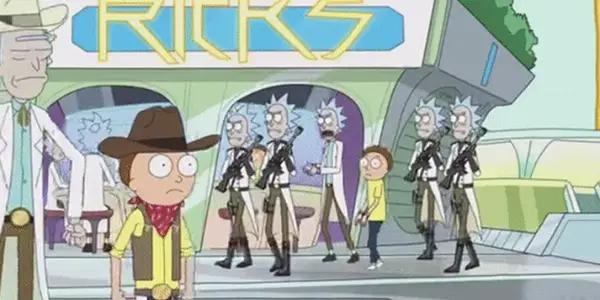
- The word ‘timeline’ is also used quite a bit throughout the show, referring to realities that seem to have branched off depending on a decision someone makes – another pointer to Everett’s Many-Worlds Hypothesis. For instance, the interdimensional goggles Rick invents shows the user an alternate version of themselves living in a different timeline based on past decisions they’ve made. Rick’s daughter, Beth, had once contemplated abortion when she was pregnant with Summer. When she looks through the goggles in the episode Rixty Minutes, she sees herself in a different timeline in which she had had the abortion, and Summer was therefore never born.
Verdict: Level 3
Do you agree that the four examples I gave primarily reflect Everett’s theory, or do they resemble a different one? Can you think of any sci-fi/fantasy stories that are examples of the other types of multiverse classifications?
Appendix
From About.Com article What are the Types of Parallel Universes? by Andrew Zimmerman Jones:
Greene’s Classifications
Brian Greene’s system of classifications from his 2011 book, The Hidden Reality, is a more granular approach than Tegmark’s. Below are Greene’s classes of parallel universes, but I’ve also added the Tegmark Level that I think they fall under.
- Quilted Multiverse (Level 1) – Space is infinite, therefore somewhere there are regions of space that will exactly mimic our own region of space. There is another world “out there” somewhere in which everything is unfolding exactly as it unfolds on Earth.
- Inflationary Multiverse (Level 1 & 2) – Inflationary theory in cosmology predicts an expansive universe filled with “bubble universes,” of which our universe is just one.
- Brane Multiverse (Level 2) – String theory leaves open the possibility that our universe is on just one 3-dimensional brane, while other branes of other number of dimensions could have whole other universes on them.
- Cyclic Multiverse (Level 1) – One possible result from string theory is that branes could collide with each other, resulting in universe-spawning big bangs that not only created our universe, but possibly other ones.
- Landscape Multiverse (Level 1 & 4) – String theory leaves open a lot of different fundamental properties of the universe which, combined with the inflationary multiverse, means there could be many bubble universes out there which have fundamentally different physical laws than the universe we inhabit.
- Quantum Multiverse (Level 3) – This is essentially the Many Worlds Intepretation (MWI) of quantum mechanics: anything that can happen does … in some universe.
- Holographic Multiverse (Level 4) – According to the holographic principle, there is a physically-equivalent parallel universe that would exist on a distant bounding surface (the edge of the universe), in which everything about our universe is precisely mirrored.
- Simulated Multiverse (Level 4) – Technology will possibly advance to the point where computers could simulate each and every detail of the universe, thus creating a simulated multiverse whose reality is nearly as complex as our own.
- Ultimate Multiverse (Level 4) – In the most extreme version of looking at parallel universes, every single theory which could possibly exist would have to exist in some form somewhere.
More to Explore
How Quantum Suicide Works-How Stuff Works
Papers
Many Worlds in Context – Max Tegmark
Books
Our Mathematical Universe: My Quest for the Ultimate Nature of Reality by Max Tegmark
The Many-Worlds Interpretation of Quantum Mechanics – Hugh Everett’s Ph.D. Thesis
Videos
Brian Greene: Is our universe the only universe? – Ted Talk
Is our universe a hologram? – Scientific American
Does content like this matter to you?
Become a Member and support film journalism. Unlock access to all of Film Inquiry`s great articles. Join a community of like-minded readers who are passionate about cinema - get access to our private members Network, give back to independent filmmakers, and more.
Radha has a PhD in theoretical quantum physics. Apart from research, she consults on sci-fi screenplays/books. In her free time, she cosplays and irritates her three cats. Bug her on Twitter: @RadhaPyari













